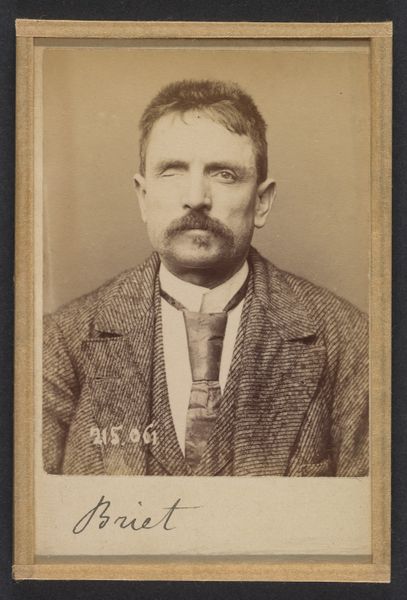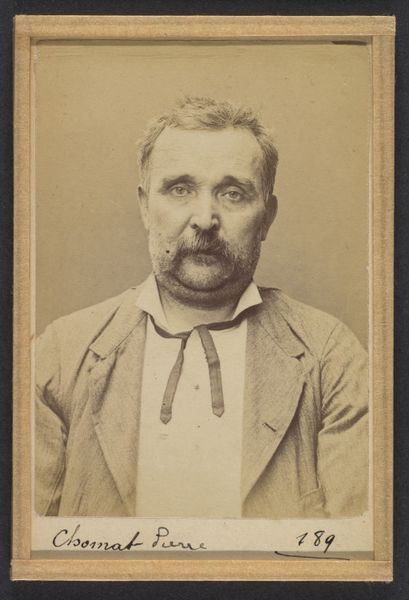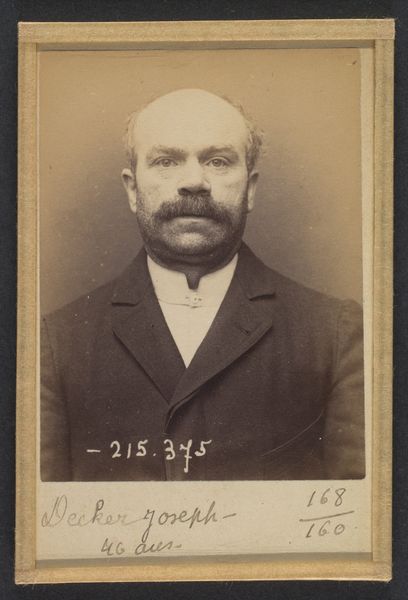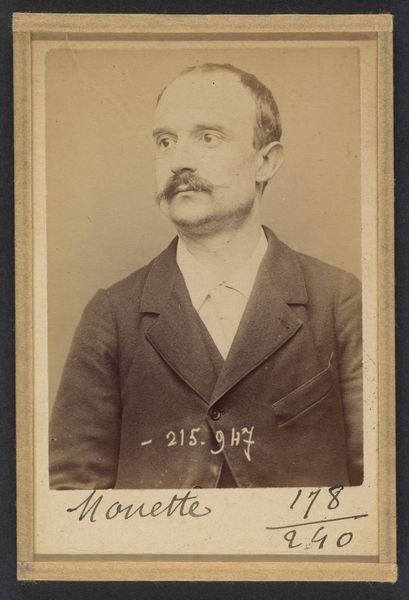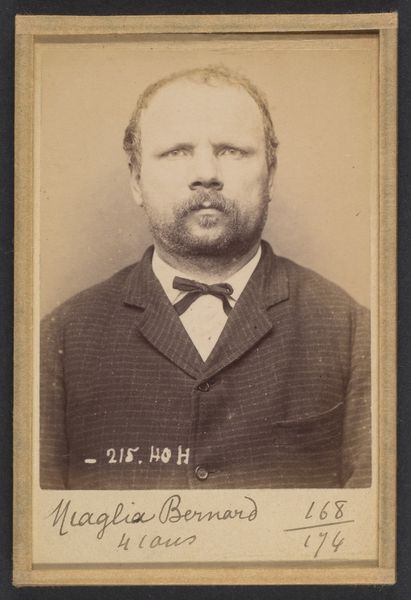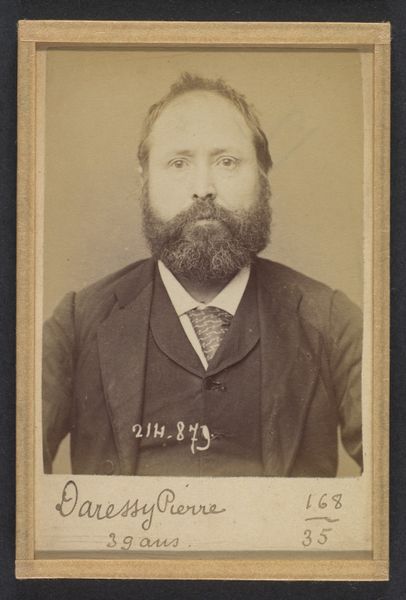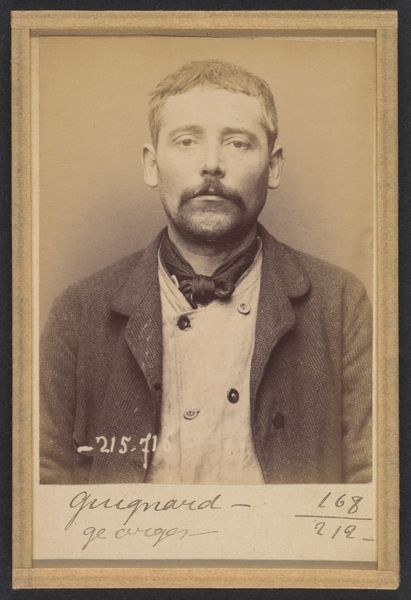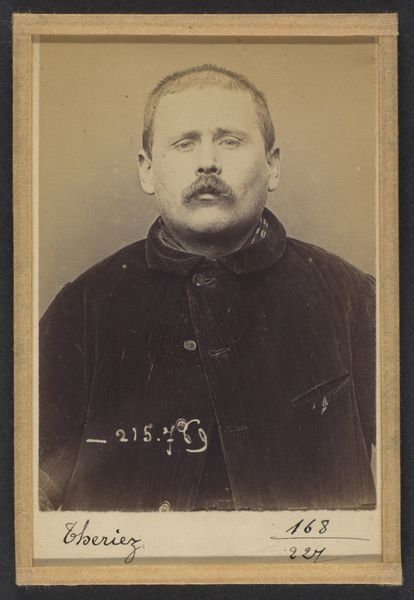
Lelarge. Louis, Eugène. 46 ans, né le 5/4/48 à Paris Ille. Employé de commerce. Anarchiste. 2/7/94. 1894
0:00
0:00
Dimensions: 10.5 x 7 x 0.5 cm (4 1/8 x 2 3/4 x 3/16 in.) each
Copyright: Public Domain
Editor: Here we have Alphonse Bertillon's daguerreotype, "Lelarge. Louis, Eugène. 46 ans…," created in 1894. It seems to be a photographic portrait. I'm struck by how direct and almost clinical it feels. What am I missing here, beyond just a man's face? Curator: Think about what it took to produce this image, both in labor and materials. The daguerreotype process itself was incredibly meticulous and expensive at the time. The chemicals, the silver-plated copper, the labor involved… this wasn't casual portraiture. Also, consider that the inscription includes identifying details alongside the subject's "anarchist" affiliation. How does that influence your reading? Editor: It makes me wonder, was this intended as art at all? The details suggest it's more of a record, a document…perhaps a criminal one given that identification aspect. But the very act of photography elevates it beyond simple record keeping. Curator: Precisely. The social context of its creation is crucial. Bertillon was standardizing mugshots for the French police, using photography as a tool of control and surveillance. Think about the power dynamics at play – the state, technology, and the individual, especially one labeled an "anarchist." It is an art born from—and serving—institutional power. Does knowing this shift your interpretation of the image's composition, its seeming neutrality? Editor: It completely does. The directness is now chilling, the seemingly neutral pose a form of control. The labor involved then wasn't just in producing an image, but in producing a record for potentially oppressive purposes. Thanks for reframing that. Curator: Absolutely. Analyzing the materials, process, and social context reveals how this image, seemingly simple, embodies complex power dynamics and the uneasy relationship between art, labor, and social control. Editor: That’s fascinating, I will certainly rethink how photography is never entirely objective, its deeply intertwined with labor and power structures, just like all the arts.
Comments
No comments
Be the first to comment and join the conversation on the ultimate creative platform.




